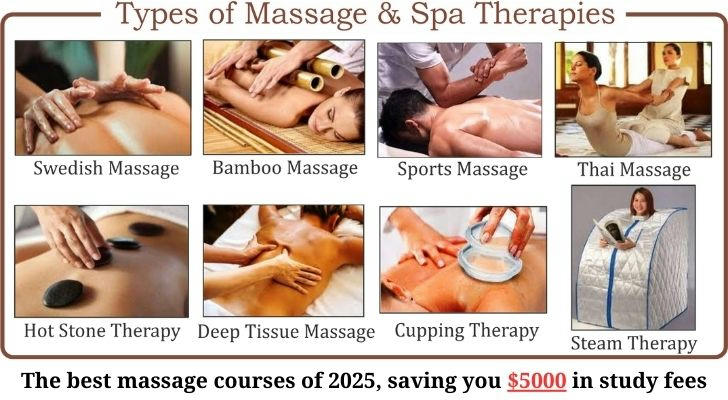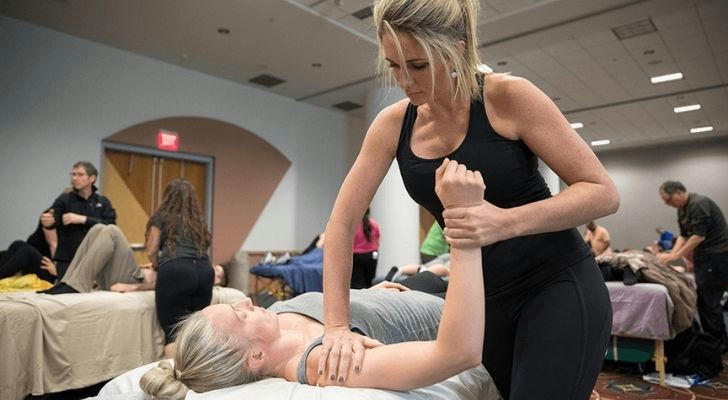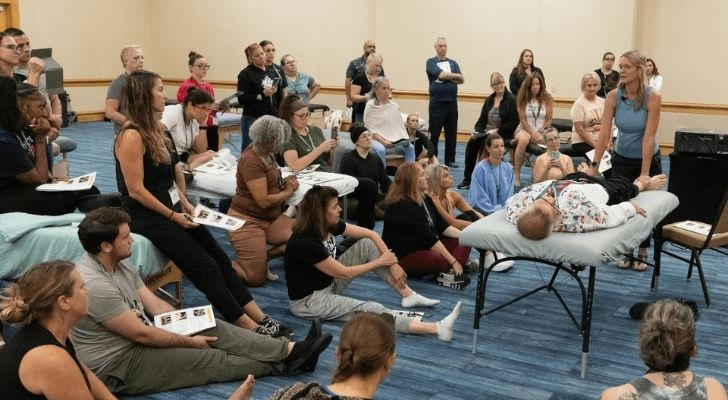AMTA Massage Courses: Your Pathway to a Rewarding Career💆♀️💼
As health and wellness continue to take center stage, massage therapy has emerged as a highly sought-after complementary health service. The American Massage Therapy Association (AMTA) offers comprehensive courses that equip students with both the theoretical knowledge and hands-on skills needed to excel in the massage industry. In addition, with attractive benefits like a $5,000 Spring Scholarship, AMTA makes it easier for aspiring massage therapists to start their journey. 😊
1. A Comprehensive Curriculum
1.1 Foundational Theory Courses
AMTA’s curriculum starts with a strong foundation to help students understand the structure and function of the human body. Key topics include:
Human Anatomy
In-depth study of the muscular, skeletal, nervous, and circulatory systems. Students learn to identify muscle groups, bone structures, and nerve pathways.
(Source: American Massage Therapy Association)Physiology & Pathology
Courses cover how the body’s functions are affected by stress, sports injuries, and illnesses, providing a basis for selecting appropriate massage techniques.Kinesiology & Functional Anatomy
Some programs integrate kinesiology to help therapists understand common injuries in athletes and the recovery processes, particularly beneficial for those interested in sports massage.
1.2 Hands-On Skills Training
After building a theoretical foundation, the focus shifts to mastering various massage techniques. Typical training includes:
Swedish Massage
Emphasizes relaxation with gentle gliding, kneading, and friction techniques to boost circulation and lymphatic flow. It’s an ideal starting point for beginners.Deep Tissue Massage
Uses firmer pressure and targeted kneading to address chronic muscle tension and trigger points. Studies show that its use in sports injury rehabilitation is on the rise.
(Data Reference: American College of Sports Medicine)Sports Massage
Designed for athletes to prevent injuries, ease post-training fatigue, and alleviate muscle soreness.Trigger Point Therapy
Focuses on pinpointing and releasing specific areas of muscle tightness to improve overall function.Other Techniques
Some courses also offer specialized methods such as hot stone massage, aromatherapy massage, and prenatal massage to cater to diverse client needs.
1.3 Clinical Practice & Internships
AMTA emphasizes real-world experience through extensive clinical practice:
On-Campus Simulations
Students practice on simulated clients under the guidance of experienced instructors to perfect their techniques.Externships
Partnerships with local spas, rehabilitation centers, and fitness clubs allow students to work with actual clients. Research indicates that students who complete internships are about 20% more likely to adapt quickly to the work environment.
(Source: Bureau of Labor Statistics)
1.4 Business & Ethics Training
In addition to technical skills, AMTA courses cover essential business and ethical topics:
Professional Ethics & Legal Regulations
Courses address industry standards, client confidentiality, and state-specific licensing requirements to ensure ethical and compliant practice.Business Management & Marketing
Students learn how to build a personal brand, manage client relationships, and run a private practice or mobile massage service—vital skills for those considering entrepreneurship.

2. Training Formats and Certification
2.1 Required Training Hours
Most states require massage therapists to complete between 500 to 1000 hours of training, including theory, practical skills, and clinical internships before they can sit for state or national certification exams.
(Source: AMTA Guidelines)
2.2 Flexible Learning Options
Full-Time and Part-Time Programs
Many institutions offer full-time courses lasting 6 to 12 months. Evening and weekend classes are also available for working professionals.Online and Hybrid Models
With the rise of online education, many schools now offer hybrid programs where theory is taught online, and hands-on practice is conducted in on-site labs.
2.3 Certification and Licensing
Upon completing the required hours, graduates must pass a national certification exam (such as the NCBTMB exam) or a state-level test to obtain a license—an essential step for legally practicing massage therapy in the U.S.
(Source: NCBTMB Website)

3. Career Outlook and Success Stories
3.1 Job Market Insights
Strong Industry Growth
According to the Bureau of Labor Statistics, employment for massage therapists is projected to grow 22% from 2021 to 2031—much faster than the average for all occupations.
(Source: BLS.gov)Competitive Salaries
Entry-level massage therapists earn a median annual salary of around $40,000 to $50,000, with potential for higher earnings as experience increases or with entrepreneurial ventures.
3.2 Real-World Success Stories
Sarah’s Journey
Once an office worker plagued by chronic neck and shoulder pain, Sarah enrolled in an AMTA-accredited program focusing on Swedish and deep tissue massage. Post-graduation, she secured a position at a high-end spa, built a loyal clientele, and eventually transitioned to a part-time private practice.John’s Entrepreneurial Success
After completing his certification, John launched his own sports massage business. By partnering with local gyms and sports teams, his focus on injury prevention and recovery quickly earned him a strong reputation, leading to rapid business growth and increased income.

4. Application Process and Learning Benefits
4.1 How to Apply
Online Application
Visit the AMTA website to fill out the online application form and submit required academic credentials (usually a high school diploma or equivalent).Application Fee
Pay the applicable fee for your chosen program. Some programs may also require an interview or skills assessment.Interview & Evaluation
Certain programs conduct interviews to gauge your background and motivation, ensuring you’re well-suited for the intensive training.
4.2 Admission Requirements
- Applicants must be at least 18 years old.
- Basic English proficiency is required for effective communication.
- A health certificate is necessary to ensure you are physically capable of performing massage techniques.
4.3 Learning Benefits
Flexible Learning Options
With full-time, part-time, and hybrid formats, you can choose a schedule that fits your lifestyle.Comprehensive Career Support
AMTA offers guidance on certification exam preparation, job placement, and even entrepreneurial training.Valuable Internship Opportunities
Collaborations with local spas, rehabilitation centers, and fitness clubs ensure you gain practical experience.Spring Scholarship
To further support your educational journey, AMTA offers a $5,000 Spring Scholarship for qualified students. This scholarship helps alleviate tuition costs and encourages more individuals to pursue a rewarding career in massage therapy.
5. Embracing a Bright Future
AMTA’s massage courses are more than just a means to acquire technical skills—they’re a gateway to a fulfilling and flexible career. With robust curriculum design, hands-on training, and strong support for professional certification, graduates are well-prepared to enter an industry with promising growth and competitive salaries.
Whether you’re looking to improve your own well-being, transition into a new career, or even start your own practice, AMTA’s comprehensive programs provide the tools you need to succeed. Supported by industry data and real-world success stories, now is the perfect time to invest in your future with a career in massage therapy. 😊
